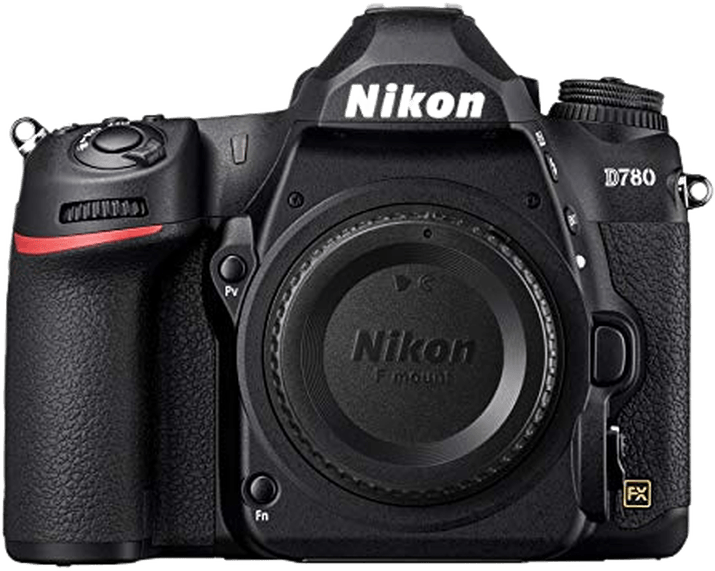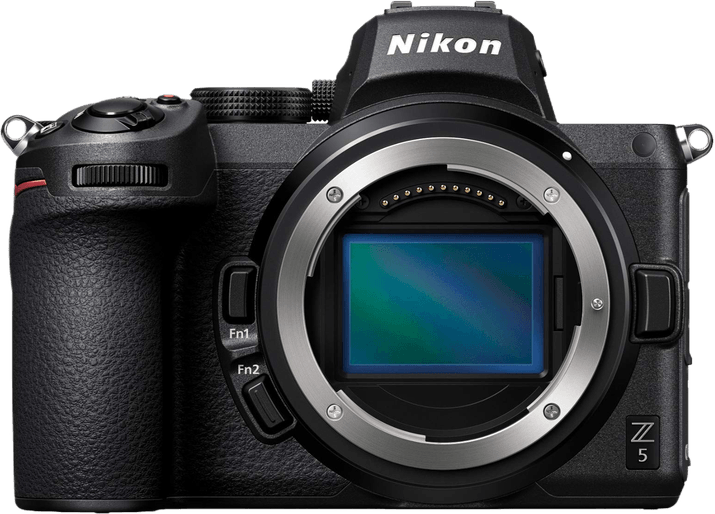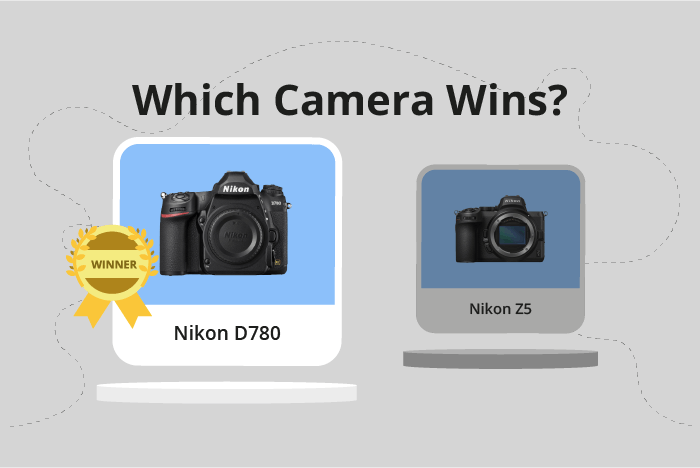Nikon D780 vs Z5 Comparison
Nikon D780

Nikon Z5

The Nikon D780 edges out the Nikon Z5 with a score of 81/100 compared to 78/100. Both cameras were released in 2020, with the D780 being a DSLR and the Z5 a mirrorless camera. They share common features such as camera type and release year.
The D780 surpasses the Z5 in terms of score and launch price, costing $2299. With a larger size of 144 x 116 x 76mm and a weight of 850g, it offers superior performance for professional photographers.
On the other hand, the Z5 is a more affordable option at $1400, making it appealing to budget-conscious consumers. It is also lighter and more compact, with dimensions of 134 x 100.5 x 69.5mm and a weight of 675g, providing convenience for those who prioritize portability.
Taking these factors into account, the Nikon D780 is the better choice for those seeking top-notch performance, while the Nikon Z5 caters to those who require a more budget-friendly and portable camera.
Nikon D780 vs Z5 Overview and Optics
The Nikon Z5 emerges as the winner in the optics comparison, scoring 81/100, while the Nikon D780 follows closely with a score of 77/100. Both cameras share several specifications, including a CMOS sensor, an Expeed 6 processor, a DXOMARK score of 97 for the sensor, and a full-frame sensor size. Despite these similarities, each camera offers unique advantages.
The Nikon Z5’s superiority in optics is primarily due to its Nikon Z lens mount and built-in image stabilization. The Nikon Z lens mount allows for a wider range of lens compatibility, providing photographers with more flexibility and options when choosing lenses. Furthermore, the Z5’s image stabilization enables steadier shots, reducing the likelihood of blurred images caused by camera shake. These features make the Nikon Z5 a more versatile camera, particularly for photographers who require a stable shooting experience and greater lens variety.
On the other hand, the Nikon D780 possesses some advantages over the Z5, such as a higher megapixel count of 25 and a faster shooting speed of 12 frames per second. The increased megapixel count results in higher resolution images, which can be beneficial for photographers who need to capture fine details. Additionally, the faster shooting speed enables the D780 to capture fast-moving subjects more effectively, making it a better option for action and sports photography.
Taking these factors into account, the Nikon Z5’s superior optics, lens compatibility, and image stabilization make it a more versatile camera for a wide range of shooting situations. Meanwhile, the Nikon D780’s higher megapixel count and faster shooting speed may appeal to photographers who prioritize image resolution and action photography. Ultimately, the choice between these two cameras will depend on the specific needs and preferences of the photographer.
Nikon D780 vs Z5 Video Performance
The Nikon D780 emerges as the winner in the video capabilities comparison, scoring 91 out of 100 points, while the Nikon Z5 falls slightly behind with a score of 83 points. Both cameras share common specifications, such as 4K maximum video resolution and dimensions of 3840 x 2160 pixels. Additionally, they both have built-in time-lapse functionality.
The D780 surpasses the Z5 in terms of its maximum video frame rate, offering 120fps compared to the Z5’s 60fps. This higher frame rate allows for smoother slow-motion footage and provides more flexibility in post-production. The D780’s superior frame rate makes it a more suitable choice for videographers who require advanced video capabilities.
On the other hand, the Nikon Z5 still performs well in the video department, but it does not provide any significant advantages over the D780. The Z5’s 60fps frame rate is sufficient for most casual users and general video recording purposes. However, it may not be the ideal choice for professional videographers who require higher frame rates.
Considering these factors, the Nikon D780 proves to be the better option for those who prioritize video performance. Its higher frame rate allows for more versatile and professional-quality footage. Meanwhile, the Nikon Z5 is a reliable camera for casual users and general video recording, but it lacks the advanced capabilities offered by the D780.
Nikon D780 vs Z5 Features and Benefits
The Nikon D780 emerges as the winner in the feature comparison with a score of 87/100, while the Nikon Z5 scores 72/100. Both cameras share certain specifications, such as a 3.2-inch screen size, touchscreen capabilities, flip screen, GPS, WIFI, and Bluetooth connectivity. Despite these similarities, the D780 surpasses the Z5 in specific areas, making it the superior camera in terms of features.
The D780’s screen resolution is significantly higher at 2,359,000 dots compared to the Z5’s 1,040,000 dots. This difference results in a sharper and clearer display on the D780, providing a better user experience while navigating menus and reviewing images. The higher screen resolution is a major contributor to the D780’s higher feature score.
While the Z5 does not outperform the D780 in any specific feature, it still offers a solid set of specifications. Its feature score of 72/100 indicates that the camera is a decent choice for photographers who value the shared features between the two models. However, the lower screen resolution is a drawback for those who prioritize image clarity on the camera’s display.
Comparing the Nikon D780 and Nikon Z5, it is evident that the D780 offers superior features, particularly in screen resolution. This advantage contributes to its higher feature score and overall better performance. The Z5, while not as strong in features, remains a viable option for those who find the shared specifications satisfactory. Ultimately, the choice between these two cameras depends on the individual’s priorities and preferences in a camera’s features.
Nikon D780 vs Z5 Storage and Battery
The Nikon D780 triumphs over the Nikon Z5 in storage and battery with a score of 97/100, compared to the Z5’s 73/100. Both cameras share common specifications, including two memory card slots and compatibility with SD, SDHC, and SDXC (UHS-II) memory cards. Additionally, both cameras have USB charging capabilities.
The D780 outperforms the Z5 significantly in battery life, offering an impressive 2260 shots per charge. It uses the EN-EL15b battery type, contributing to its longer-lasting performance. In contrast, the Z5 falls short with only 470 shots per charge, using the EN-EL15c battery type.
Despite the Z5’s lower score, it still provides ample storage and battery capabilities for most photographers. However, the D780 is the clear winner for those seeking longer battery life and more efficient storage management.
Nikon D780 vs Z5 – Our Verdict
Are you still undecided about which camera is right for you? Have a look at these popular comparisons that feature the Nikon D780 or the Nikon Z5:

